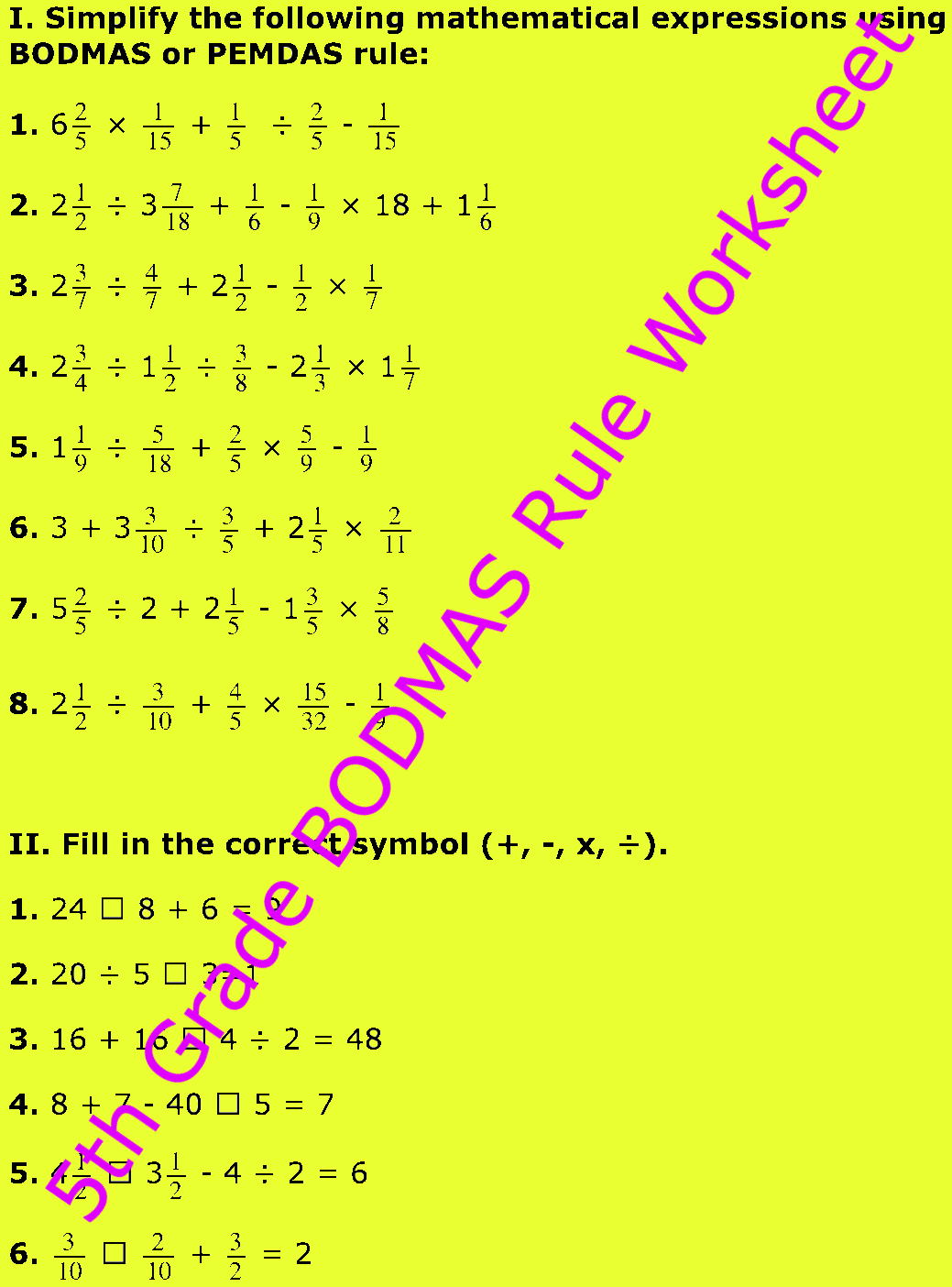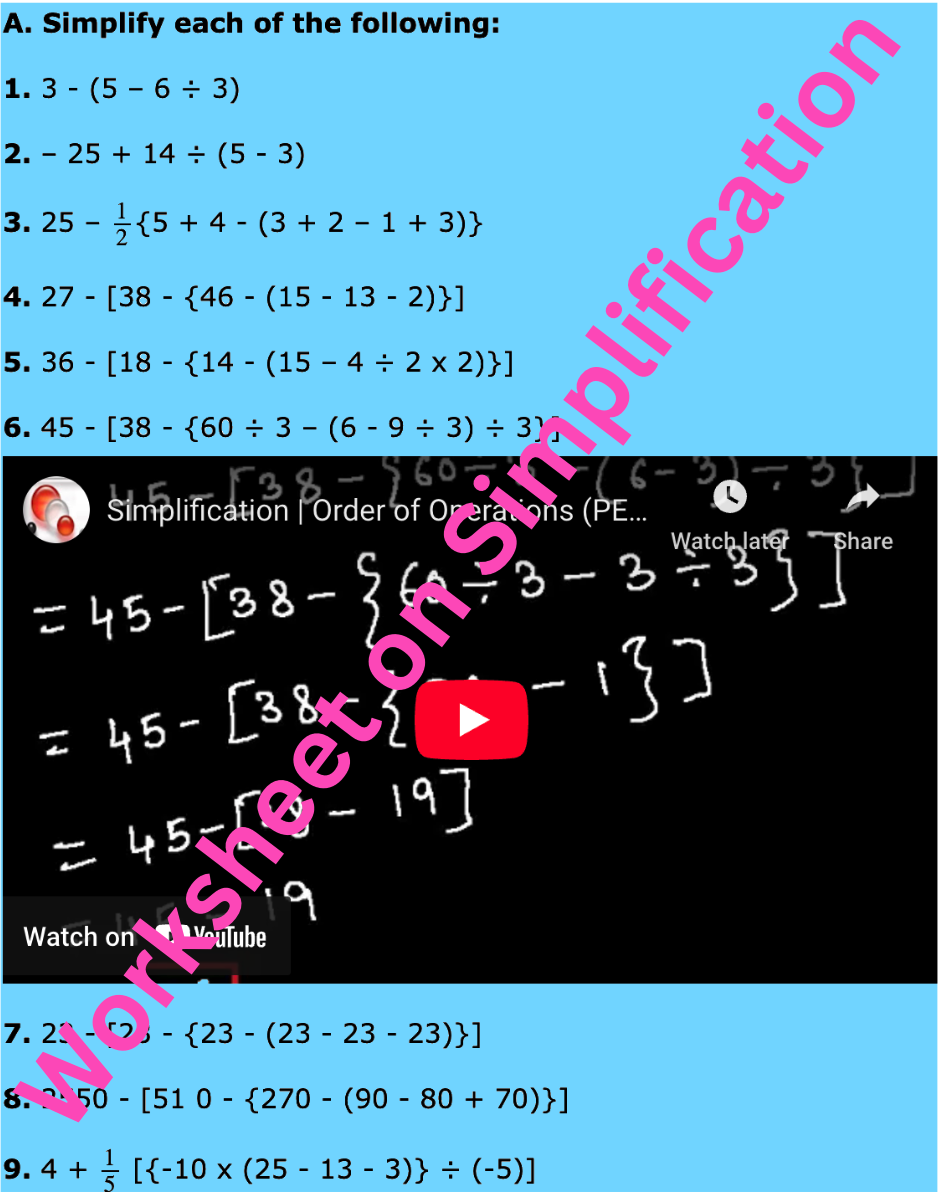Formulae for Converting Product into Sum or Difference
How to remember the formulae for converting product into sum or difference?
2 sin X cos Y = sin (X + Y) + sin (X - Y) ………. (i)
2 cos X sin Y = sin (X + Y) - sin (X - Y) ………. (ii)
2 cos X cos Y = cos (X + Y) + cos (X - Y) ………. (iii)
2 sin X sin Y = cos (X - Y) - cos (X + Y) ………. (iv)
The following points will help us to remember the above four formulas:
(i)The product to be converted to sum or difference and should contain 2 as a factor.
(ii) The angles in sines or cosines of sum appear as ‘sum’ (i.e., X + Y) of the given angles X and Y.
(iii) The angles in sines or cosines of difference appear as ‘difference’ (i.e., X - Y) of the given angles X and Y.
(iv) In case of formula (i), we shall have the sum of two sines when the product consists of a pair of sine and cosine. The angle in sine (i.e. X) of product is greater than the angle of cosine (i.e. Y).
(v) In case of formula (ii), we shall have the difference of two sines when the product consists of a pair of cosine and sine. The angle in cosine (i.e. X) of product is greater than the angle of sine (i.e. Y).
(vi) In case of formula (iii), we shall have the sum of two cosines when the product consists of two cosines.
(v) In case of formula (iv), we shall have the difference of two cosines when the product consists of two sines.
(vi) In case of formula (i), (ii) and (iii) when the product consists of a pair of sine and cosine or two cosines we first write the sum (i.e. X + Y) and then the difference (i.e. X - Y) of the angles in the converted formula; but in case of formula
(iv) when the product consists of two sines we first write the difference and then the sum of the angle in the converted formula.
The following verbal statements will help us to remember the above four formulas:
For formula (i): 2 sin X cos Y = sin (sum) + sin (difference) (X > Y)
For formula (ii): 2 cos X sin Y = sin (sum) - sin (difference) (X > Y)
For formula (iii): 2 cos X cos Y = cos (sum) + cos (difference)
For formula (iv): 2 sin X sin Y = cos (difference) - cos (sum)
● Converting Product into Sum/Difference and Vice Versa
- Converting Product into Sum or Difference
- Formulae for Converting Product into Sum or Difference
- Converting Sum or Difference into Product
- Formulae for Converting Sum or Difference into Product
- Express the Sum or Difference as a Product
- Express the Product as a Sum or Difference
11 and 12 Grade Math
From Formulae for Converting Product into Sum or Difference to HOME PAGE
Didn't find what you were looking for? Or want to know more information about Math Only Math. Use this Google Search to find what you need.
Recent Articles
-
Worksheet on Fractions | Questions on Fractions | Representation | Ans
Apr 07, 25 02:37 AM
In worksheet on fractions, all grade students can practice the questions on fractions on a whole number and also on representation of a fraction. This exercise sheet on fractions can be practiced -
Counting Numbers from 1 to 50 | Match the Number | Missing Numbers
Apr 04, 25 03:46 PM
In counting numbers from 1 to 50, recognize the numbers, count and then join the numbers in the correct number order. Here we mainly need eye-hand coordination to draw the picture and maintain the num -
Counting Eleven to Twenty with Numbers and Words |Numbers from 11 - 20
Apr 04, 25 03:21 PM
Counting eleven to twenty with numbers and words are explained below. One ten and one more is eleven. Eleven comes after ten. One ten and two more is twelve. Twelve comes after eleven. -
5th Grade BODMAS Rule Worksheet | PEMDAS | Order of operations|Answers
Apr 03, 25 03:11 PM
In 5th Grade BODMAS Rule Worksheet you will get different types of problems on mathematical expressions involving different operations, mathematical expression with 'brackets' and 'of' and simplifying… -
Worksheet on Simplification | Simplify Expressions | BODMAS Questions
Apr 03, 25 02:58 PM
In worksheet on simplification, the questions are based in order to simplify expressions involving more than one bracket by using the steps of removal of brackets. This exercise sheet





New! Comments
Have your say about what you just read! Leave me a comment in the box below. Ask a Question or Answer a Question.